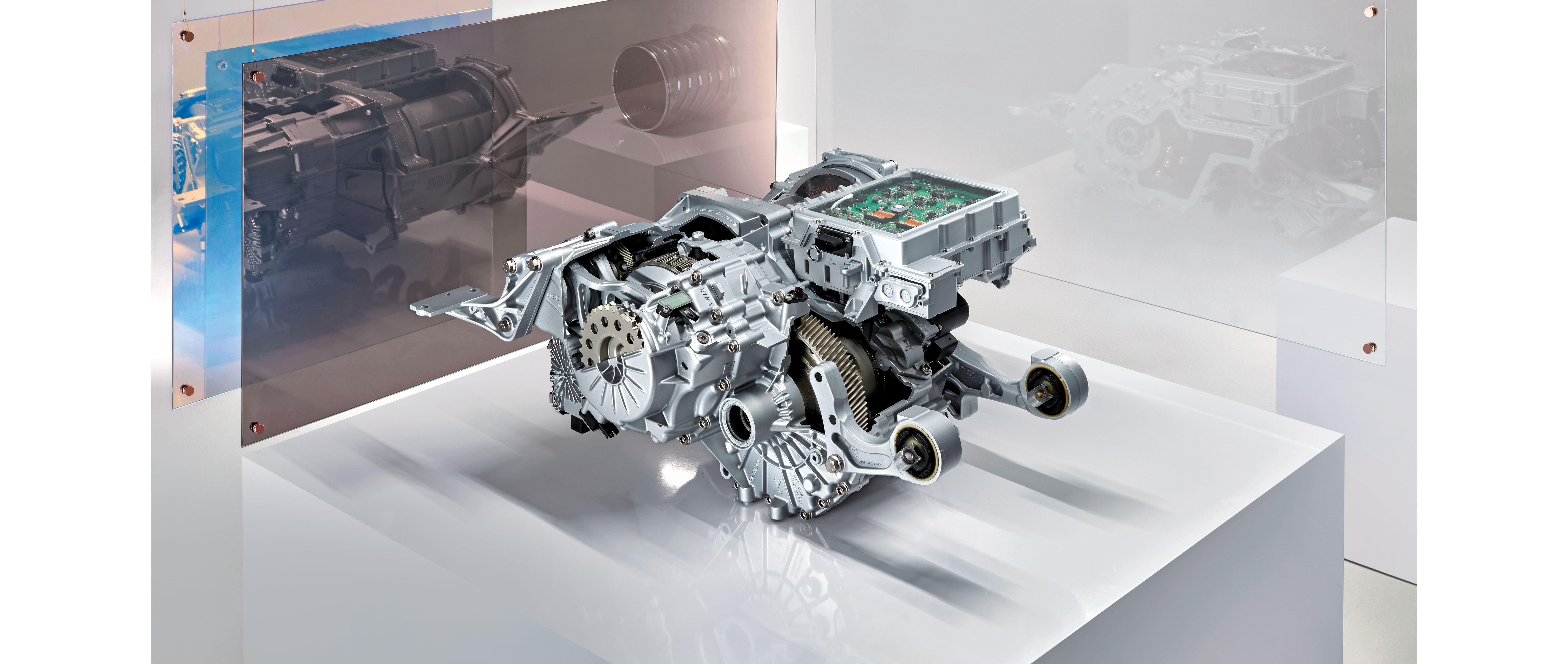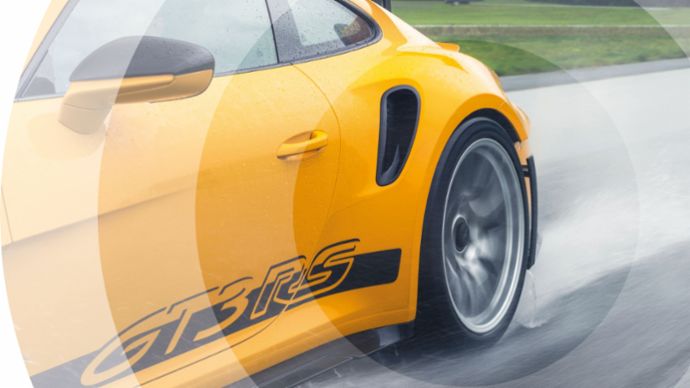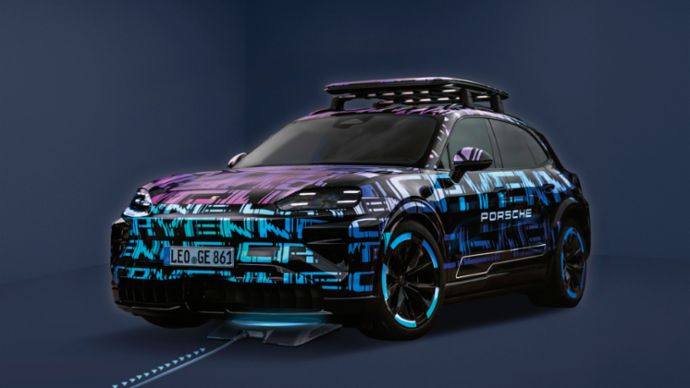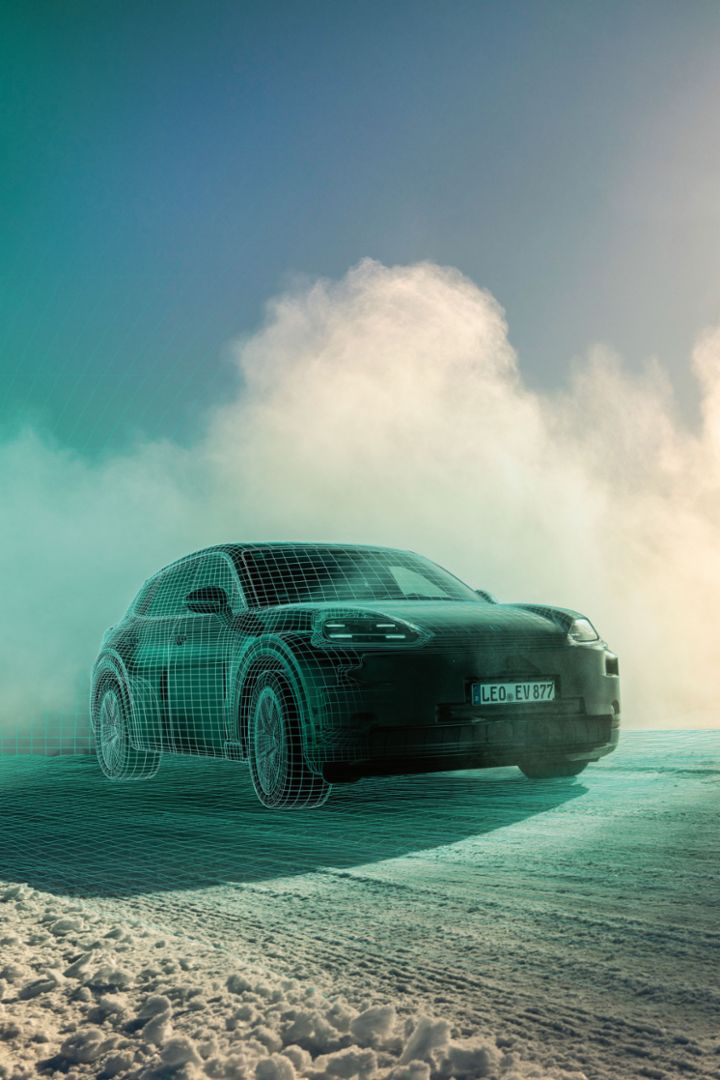High Voltage
With the pioneering drive of the Porsche Taycan, Zuffenhausen continues its tradition of innovation. This is how electric motors work in detail.
Please sit back. If you fully depress the accelerator pedal of a Porsche Taycan Turbo S, you will experience 12,000 reasons to choose a stable seating position. The driver and passengers are pressed into the upholstery in a manner that almost takes their breath away when the top model of the electric sports car unleashes its collective torque of 12,000 Nm on all four wheels at once (Taycan Turbo S (2023): Electric power consumption* combined (WLTP) 23.4 – 22.0 kWh/100 km, CO₂ emissions* combined (WLTP) 0 g/km, CO₂ class A ). The concentrated power is discharged in full without any delay—and the thrust from the two electric motors on the front and rear axles remains virtually unchanged up to top speed. This dose of adrenaline is the active ingredient in Porsche’s unique drive technology. It’s no coincidence that the renowned Center of Automotive Management (CAM) declared the Taycan the world’s most innovative model of 2020. At Porsche, innovation has always meant pushing technologies to the extreme. In this case, that means nothing less than exploiting the potential of the electric drive in a way that no one has ever done before.
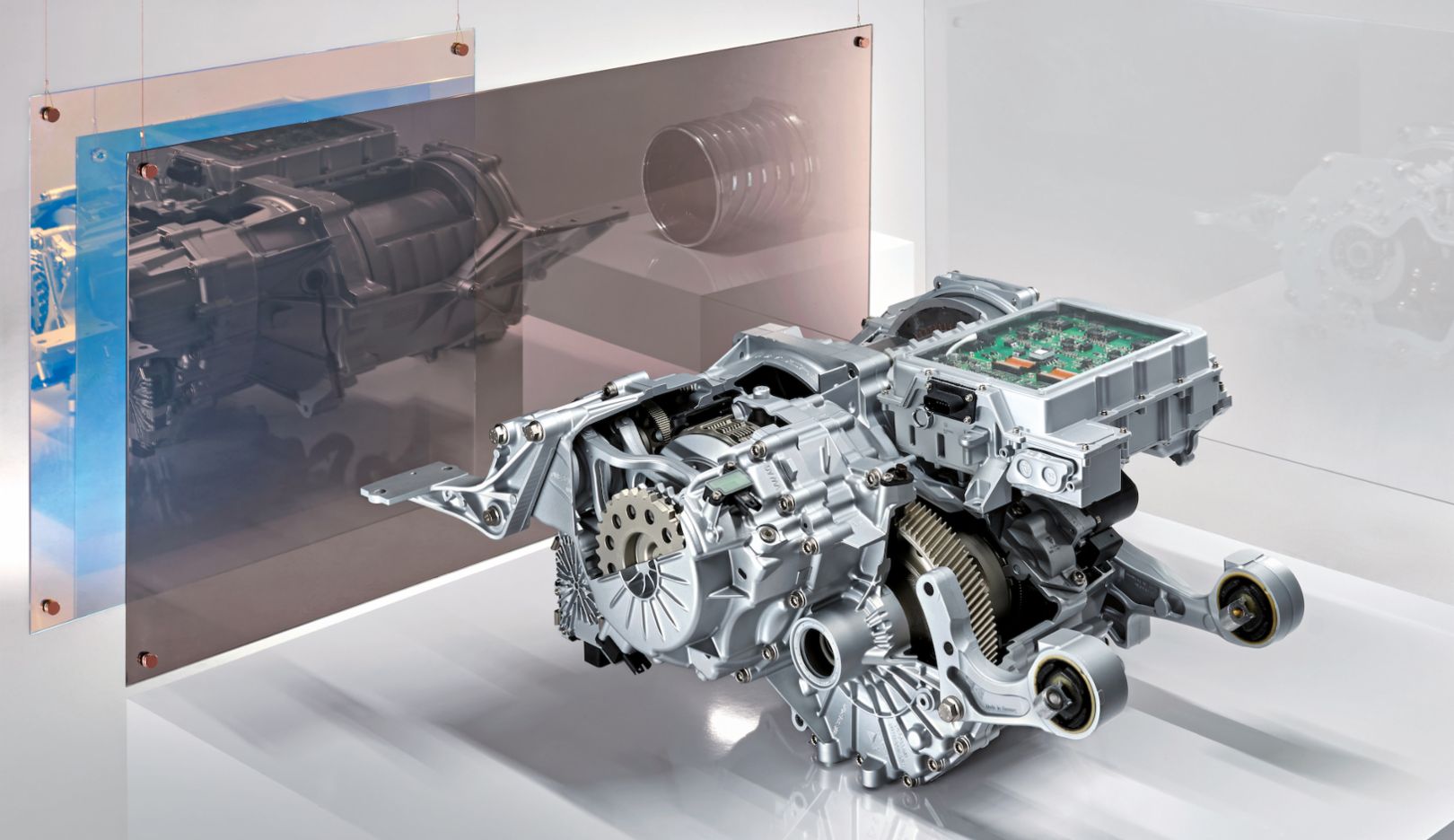
Powerhouse:
The electric motor and two-speed gearbox (front) are arranged parallel to the rear axle. The power electronics are located on top.Porsche did not come up with this concept just yesterday. Or even the day before. In fact, it was more than 120 years ago. At that time, the young Ferdinand Porsche developed his first electric vehicles with steered wheel hub motors—a world first. The possibilities offered by electromobility spurred on his sporting ambition, and his race car equipped with four electric wheel hub motors became the world’s first all-wheel-drive passenger car.
The simple DC motors of yesteryear have long since been replaced by more sophisticated machines. However, the basic physical principle has remained the same: magnetism. A magnet always consists of a north and a south pole. Unequal poles attract; equal poles repel. On the one hand, there are permanent magnets, which are based on the interplay of elementary particles. On the other, magnetic fields also arise every time an electric charge is moved. To amplify the electromagnetism in play, the current-carrying conductor in an electric motor is arranged to form a coil. Electromagnets as well as—depending on the design of the motor—permanent magnets are arranged on two components. The stationary part is called the stator, the rotating part is the rotor. Periodically switching the electrical voltage on and off creates attractive and repulsive forces that generate the rotary motion of the rotor.

Centerpiece:
The stator of the e-motor essentially consists of circular sheet-metal discs layered into a tube and the copper coils. U-shaped bent wires are inserted into gaps in the tube and connected to each other.Hairpin technology means more copper in the stator
The stator is surrounded by a very stable cooling water jacket. The temperature is permanently monitored and controlled.
The copper wires, which are connected to each other to form coils, generate magnetic fields as soon as current flows through them.
The individual wires, bent like hairpins, are laser-welded together at the ends in series to form coils and are insulated.
Not every type of electric motor is suitable for propelling a vehicle. Porsche makes use of the permanently excited synchronous machine (PSM). Compared to the predominantly used design—the less costly asynchronous machine (ASM)—the PSM offers higher continuous output because it overheats less easily and therefore does not have to be turned down. Porsche’s PSM is supplied and controlled via power electronics with three-phase AC voltage: the speed of the motor is determined by the frequency at which the alternating voltage oscillates around the zero point from plus to minus. In Taycan motors, the pulse inverter sets the frequency of the rotating field in the stator, thus regulating the speed of the rotor. The rotor contains high-quality permanent magnets with neodymium-iron-boron alloys that are permanently magnetized during the manufacturing process via a strong directional magnetic field. The permanent magnets also enable a very high degree of energy recovery through recuperation during braking. In overrun mode, the electric motor goes into regenerative mode while the magnets induce voltage and current into the stator winding. The recuperation performance of the Porsche e-motor is the best among the competition.
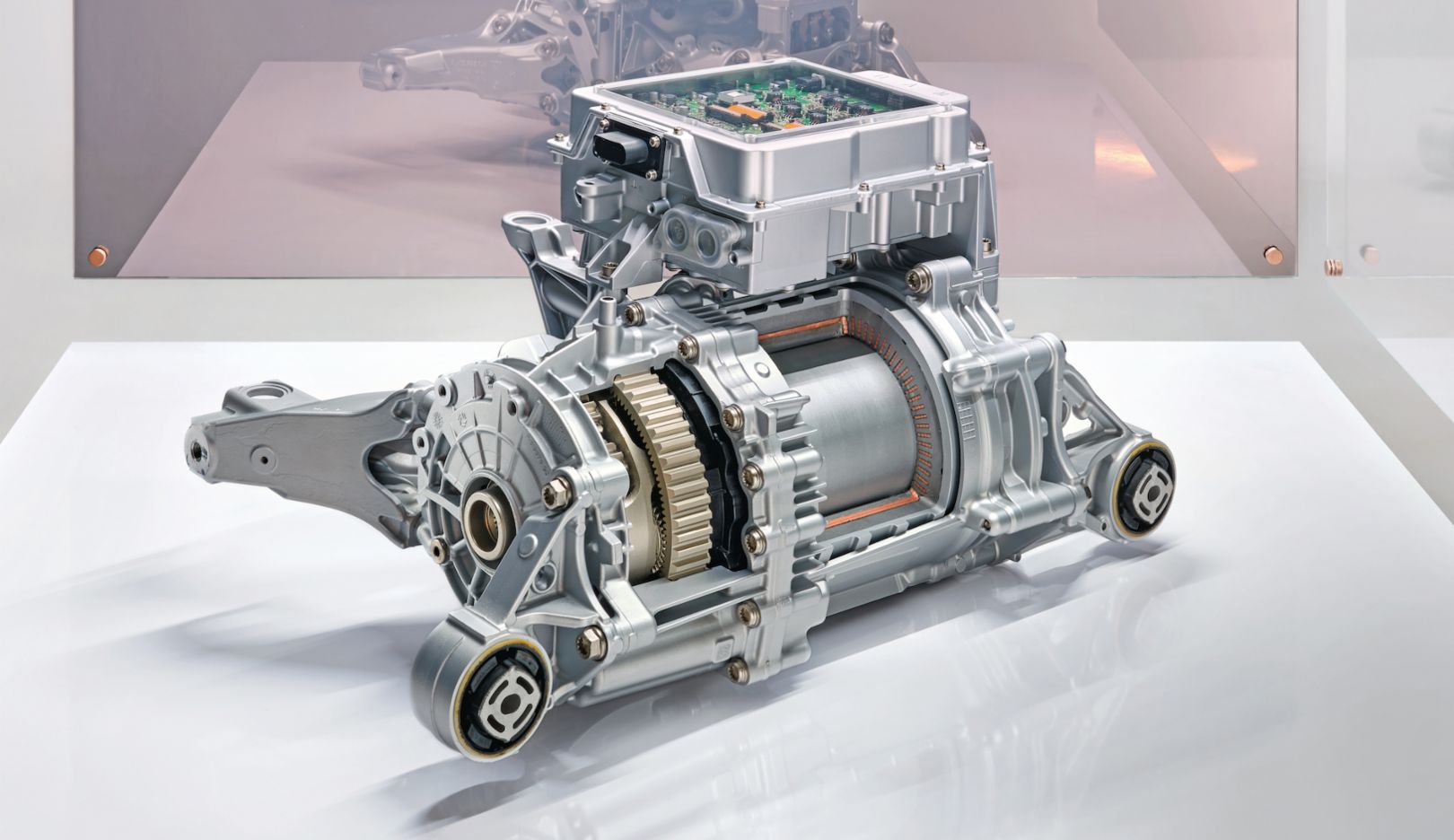
Compact:
The front-axle drive of the Taycan is designed to be even more space-saving than the drive unit in the rear. The motor and gearbox are arranged coaxially; the rotor, gearbox, and axle shafts are in line.Permanently excited synchronous machines for higher continuous power
The power electronics are located directly on the drive. In this way, the connection between the motor and sensors can be short, efficient, and low-weight.
The planetary gearbox of the front-axle drive has one gear and a 1:8 ratio. As a result, the wheel torque reaches as much as 3,000 Nm.
The stator of a permanently excited electric motor contains the active electromagnets, while the rotating rotor contains the passive permanent magnets. This principle is optimal for sports-car drives.
Technology driven to its very limits: this Porsche gene is reflected in a special feature of the Taycan motors, known as the hairpin winding. In this winding, the coils of the stator consist of wires that are not round but rectangular. And unlike classic winding processes where the copper wire is obtained from an endless reel, hairpin technology is what is known as a forming-based assembly process. This means that the rectangular copper wire is divided into individual sections and bent into a U-shape—similar to a hairpin. These individual “hairpins” are inserted into the stator laminations in which the winding is mounted in such a way that the surfaces of the rectangular cross-section lie on top of each other. This is the decisive advantage offered by hairpin technology: it allows the wires to be packed more densely, thereby adding more copper to the stator. While conventional winding methods have a copper fill factor—as it is known—of around 50 percent, the technology used by Porsche has a fill factor of almost 70 percent. This increases power and torque with the same installation space. The ends of the wire “hairpins” are welded together by laser, creating the coil. Another important advantage is that the homogeneous contact between adjacent copper wires improves heat transfer and a hairpin stator can be cooled much more efficiently. Electric motors convert more than 90 percent of the energy into propulsion. But just as in an internal combustion engine, the losses are converted into heat that has to be dissipated. That is why the motors have a cooling water jacket.
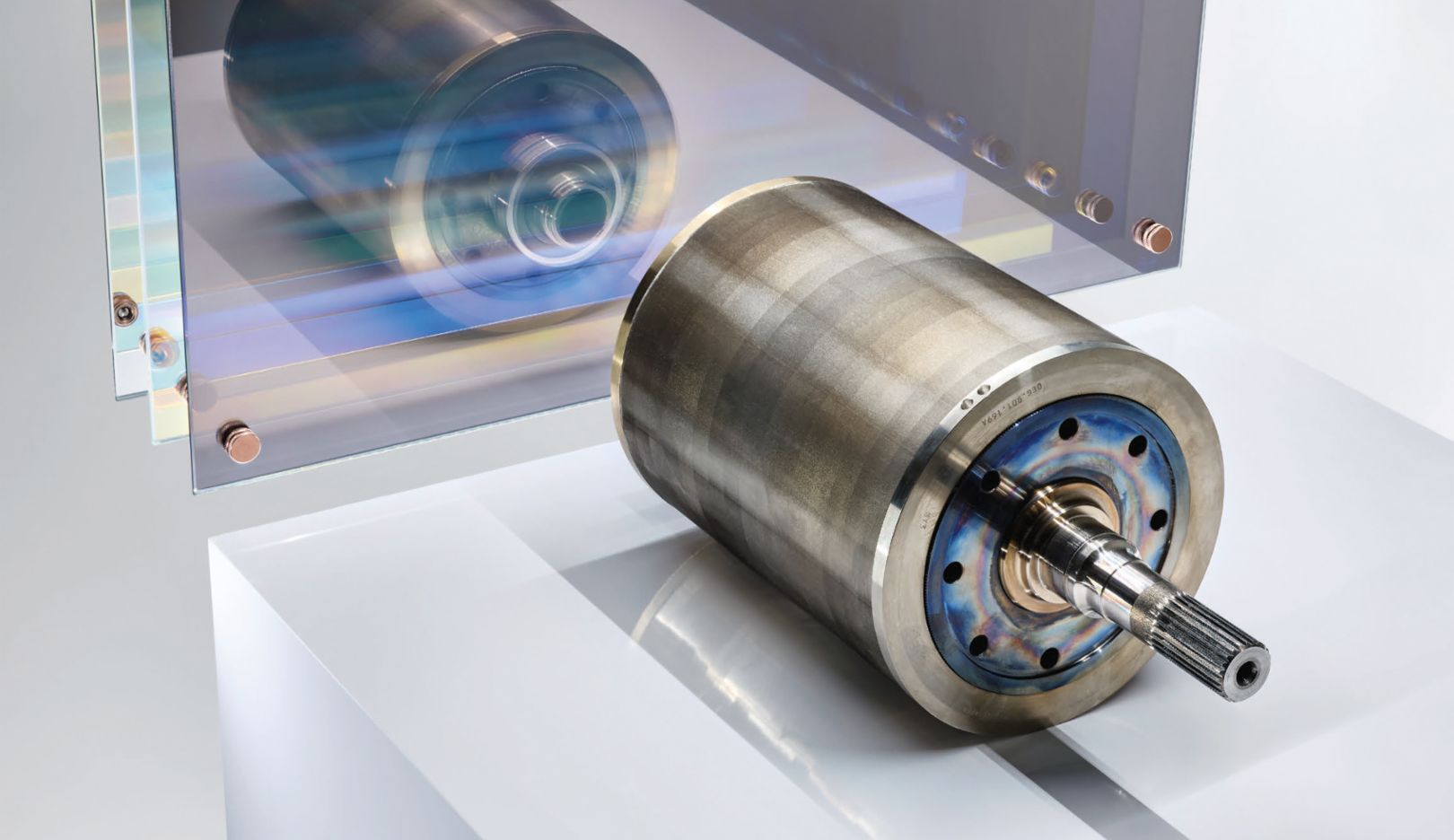
Flywheel mass:
The rotor is filled with permanent magnets arranged in a V-shape.In order to precisely control a permanently excited synchronous motor, the power electronics must know the exact angular position of the rotor. This is what the resolver is for. It consists of a rotor disc made of field-conducting metal, an exciter coil, and two receiver coils. The exciter coil generates a magnetic field that is transmitted via the encoder to the receiving windings. This induces a voltage in the receiving coils, whose phase position is shifted proportionally to the rotor position. The control system can use this information to calculate the exact angular position of the rotor. This control system, known as the pulse inverter, is the culmination of Porsche expertise. It is responsible for converting the battery direct current at 800 volts into alternating current and supplying it to the two e-motors. Porsche was the first manufacturer to implement a voltage level of 800 volts. Originally developed for the Porsche 919 Hybrid race car, this voltage now reduces weight and installation space in series production thanks to leaner cables, enabling shorter charging times.
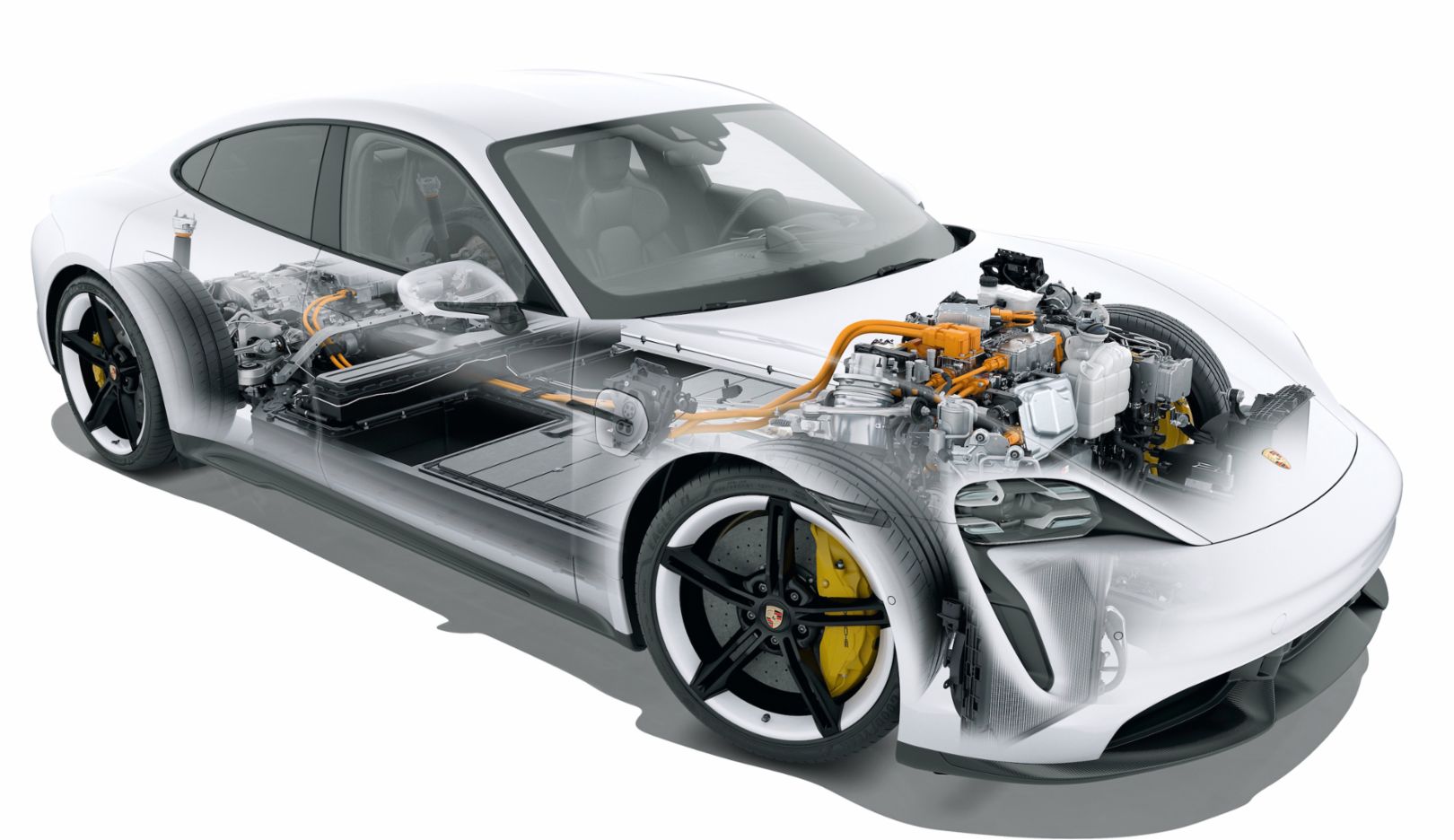
Taycan network
Rear-axle drive with two-speed gearbox
Front-axle drive and auxiliary units
The wiring harness to the front-axle drive lies above the high-performance battery
The electric motors reach up to 16,000 revolutions per minute. To make optimum use of this speed range for the Porsche’s signature spread between dynamics, efficiency, and top speed, the front and rear drive units each have their own transmission. The Taycan is the first electric sports car ever to have a transmission with two shiftable gears on the rear axle, the first of which has a very short reduction ratio. On the front axle, an input planetary gearbox transmits power to the wheels.
These combine to give the Taycan Turbo S its mighty powers. At the front axle, the gear ratio translates the 440 Nm generated by the electric motor to around 3,000 Nm at the wheels. Some 610 Nm from the rear-axle motor are multiplied in first gear to about 9,000 Nm of axle torque. The task of the longer-ratio second gear is to ensure efficiency and power reserves at high speed.
Pioneering cutting-edge technology down to the smallest detail—a continuation of Porsche’s tradition of innovation in the age of electric drive.
Consumption data
911 GT3 RS
Taycan Turbo S (2023)
-
23.4 – 22.0 kWh/100 km
-
0 g/km
-
A Class
